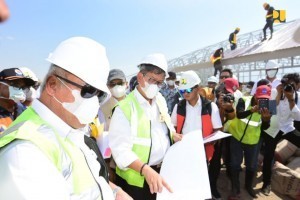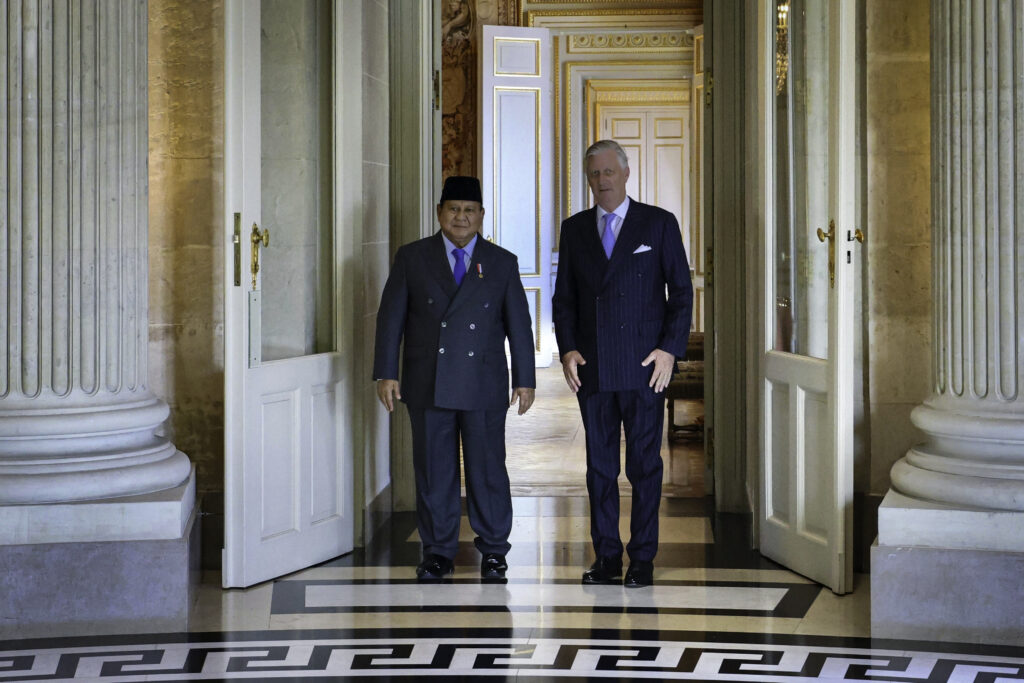Temporary Houses in Central Sulawesi to be Occupied in Mid-December 2018

Minister of Public Works and Public Housing Basuki Hadimuljono inspects the construction of temporary houses in Central Sulawesi Province, Wednesday (24/10). (Photo by: Ministry of Public Works and Public Housing)
The Government through Ministry of Public Works and Public Housing is constructing a total of 1,200 temporary housings (huntara hunian sementara) for earthquake victims in the city of Palu as well as regencies of Sigi and Donggala, Central Sulawesi Province.
Minister of Public Works and Public Housing Basuki Hadimuljono said that the huntara are targeted to be completed in stages and can be occupied starting mid-December 2018.
A total of 1,200 huntara constructed in the first stage are projected to accommodate 14,400 families. The houses are built with a knockdown model sized 12 x 26.4 square meters, divided into 12 rooms where each room will be occupied by one family, the Minister said when inspecting the location of the construction in Petobo, Palu, Central Sulawesi, Wednesday (24/10).
The Minister said that to accelerate the construction of huntara, each contractor from BUMN Karya (state-owned construction company) will continue to increase the number of the workforce so that the work time can be extended until the evening by using the shift system. For the huntara in Petobo area, Basuki said that the Government will construct as many as 70 units and currently there are four huntara are being built.
According to the Minister, the number of huntara constructed will increase along with the data updating of displaced residents in need. The houses are used as a transit location of the displaced residents while waiting until the relocated permanent housings are completed.
The cost for constructing a unit of huntara is approximately Rp500 million. The house is equipped with 4 toilets, 4 bathrooms, a septic tank, a laundry area, a kitchen equipped with 450 watts of electricity for each room. For the installation of electricity and the payment will be coordinated with Ministry of Energy and Mineral Resources and PLN (state-owned electricity company). There should be special policies to help the displaced residents, Basuki said.
In the meantime, Head of the Central Sulawesi Disaster Management Task Force of Ministry of Public Works and Public Housing Arie Setiadi Moerwanto said that the huntara occupancy will be carried out gradually without waiting for all house units to be completed. The aim is to accelerate the transfer of displaced residents from unfeasible tents conditions and to protect them from the approaching rainy season.
The huntara will be located in a cluster system of five zones by considering the factors of land availability and site security from the earthquake impact. Each cluster will consist of 10 temporary houses (120 rooms) and there will be one Early Childhood Education Center (PAUD) and one elementary school, a trash dump, open space for community activities, and a motorcycle parking lot.
The huntara construction is also quake-resistant and accommodates the local hot weather since Palu is located on the equator. The materials of construction are light steel with walls made from glass fiber reinforced cement (GRC).
We make the temporary houses as comfortable as possible because it will be used for a quite long period of time, around 1 to two years, while waiting until the permanent housing constructed by the Government is completed, he said.
For the city clean-up, according to Arie, about 65 percent of affected areas has been accomplished. As for the rehabilitation of public facilities, the Ministry is currently completing a technical verification report on the condition of the buildings whether they are still feasible to use or not.
According to the verification results, some of public facilities structures are already poor and were severely damaged so they must be replaced by new buildings. While some of others are lightly damaged so we only need to do architectural improvements, Arie said.
Also present on the inspection were Governor of Central Sulawesi Longki Djanggola and Director General of Cipta Karya Danis H. Sumadilaga. (Biro Komunikasi Publik Kementerian PUPR/EN)
Translated by: Galuh Wicaksono
Edited by: Lulu Wuliarti








